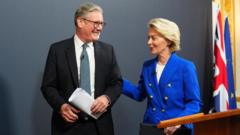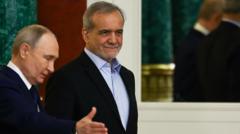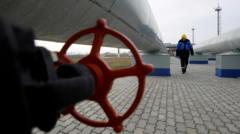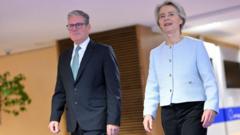A recent study at Fermilab provides the most accurate measurement of a muon's wobble, with potential connections to unknown forms of matter and energy. However, contrasting theoretical predictions cast doubt on the findings' significance until further investigation is conducted.
New Insights from Muon Research: A Step Closer to Understanding Unseen Matter

New Insights from Muon Research: A Step Closer to Understanding Unseen Matter
Physicists reveal groundbreaking findings about the muon's behavior, yet uncertainty lingers over the implications for particle physics.
It has been over a decade since physicists orchestrated the transportation of a massive magnetic ring across various states to Fermilab in Batavia, Illinois. This week, researchers from the Muon g-2 Collaboration unveiled their latest findings: the most precise measurement to date of the muon's oscillation behavior. This tiny particle, akin to an electron but significantly heavier and less stable, may harbor mysteries about the universe's fundamental composition and energy that remain unexplored.
The results were introduced in a submission to the influential journal, Physical Review Letters, where physicists expressed hope that new insights into the fundamental fabric of reality could emerge. "Our goal is to decipher the universe’s formation, its constituent elements, and their interactions," expressed Peter Winter, a physicist with Argonne National Laboratory who is also a spokesperson for the collaboration. He emphasized that this new data would serve as an important reference for future studies.
Despite this significant achievement, a conspicuous problem persists. There are two differing theoretical predictions concerning the muon's wobble, and the latest findings align with one of those predictions. Until scientists can adequately address and resolve the inconsistencies with the alternate prediction, the underlying evidence for new physics remains inconclusive. Aida El-Khadra, a physicist at the University of Illinois Urbana-Champaign leading the Muon g-2 Theory Initiative, confirmed the success of the Fermilab experiment but noted that theoretical clarification is vital. "The theoretical community still has its work cut out," she commented, reinforcing that the ultimate implications of these findings are still unsure.
Muons demonstrate a fascinating behavior; when situated in a magnetic field, they exhibit a precession, or wobble, akin to a spinning top. The rate of this wobble relies on the muon's intrinsic property known as g. Until both experimental results and theoretical frameworks are firmly aligned, the scientific community remains poised for further developments in this intriguing area of physics.



















